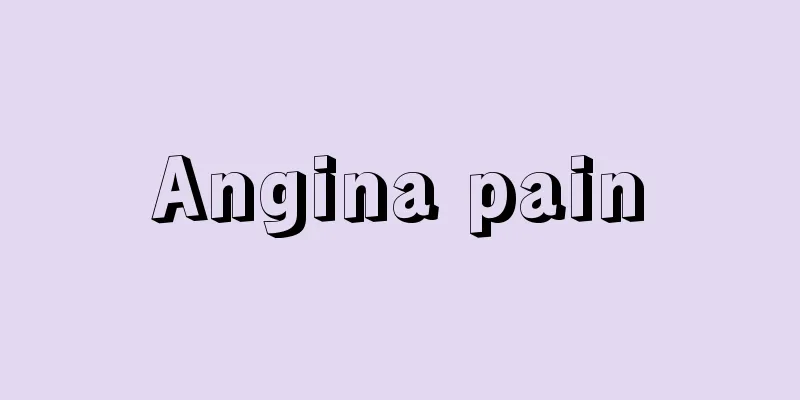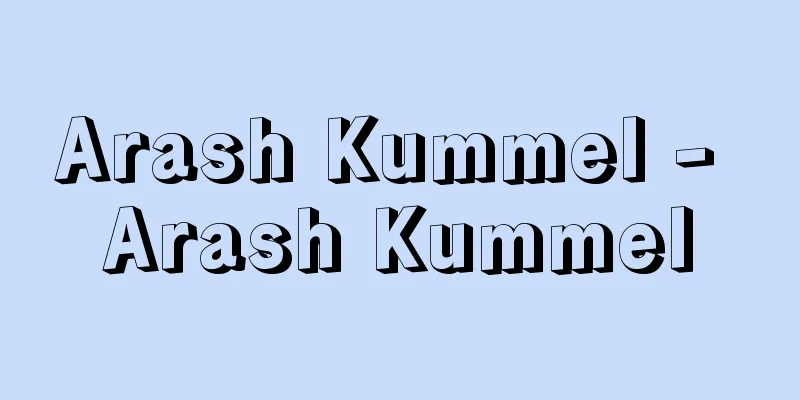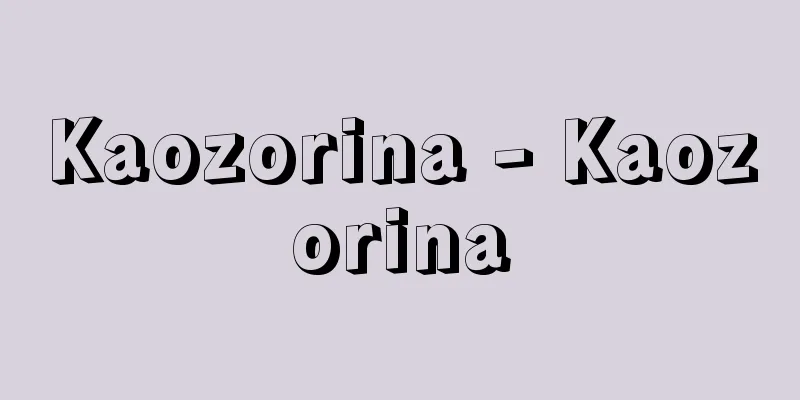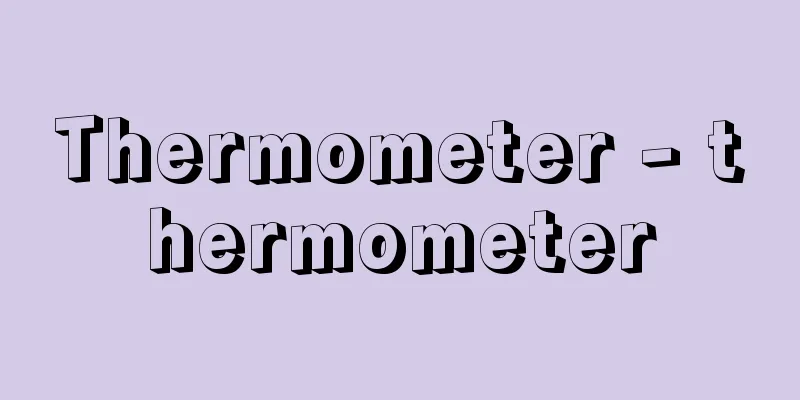Hull strength - strength
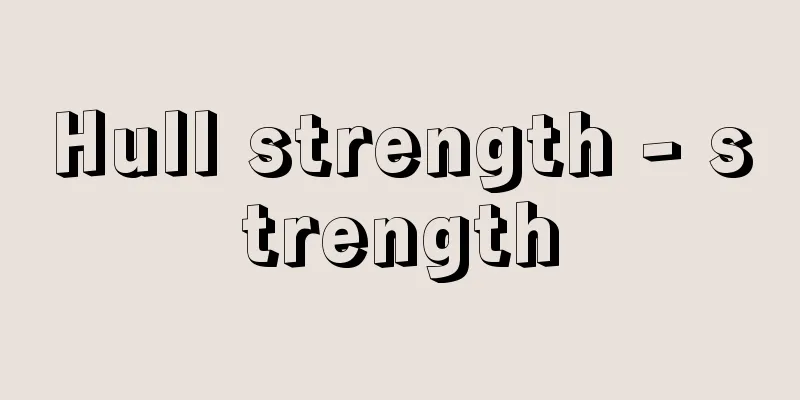
|
Hull strength. When a ship is floating quietly, in addition to its own weight, the weight of the cargo and fuel it is carrying, and the pressure or buoyancy of the seawater act on the hull. When a ship is sailing and pitching, the forces of water pressure and waves act repeatedly and fluctuate. Also, when a ship is traveling at high speed in rough seas, waves crash violently against the bow, causing an impact force. The hull must be designed and constructed to withstand these various forces. [Morita Tomoharu] Longitudinal StrengthWhen cargo and fuel are concentrated in the center of a ship, gravity becomes stronger than buoyancy in the center, and the ship's hull bends with the center concave downwards. This is similar to the way a bridge made of planks bends when weight is placed on the center. This type of bending is called sagging. Conversely, when weight is concentrated at the front and rear of the ship, the center bends upwards. This type of bending is called hogging. Even if the cargo is evenly distributed, the force of the waves can cause a similar deformation. Consider a ship moving at right angles to the waves. Looking at the side of the ship, the crests and troughs of the waves pass one after another from the bow to the stern. When the wave trough is located in the center of the ship, gravity becomes stronger than buoyancy in the center, and buoyancy becomes stronger than gravity at the bow and stern, resulting in a sagging state. Next, when the wave crest reaches the center, the exact opposite force is applied, resulting in a hogging state. A ship sailing through waves is constantly repeating such deformations. When the load is concentrated in the center of the hull, the waves accentuate hogging, and when it is concentrated in the bow and stern, sagging is accentuated. These deformations are called longitudinal bending, and the strength of the hull that resists them is called longitudinal strength. In sagging, the bottom of the ship is pulled and the deck is compressed, as if a large number of people were riding on the center of a bridge, and this effect is greatest in the center of the hull. In hogging, the deck is pulled and the bottom is compressed. If the longitudinal strength is insufficient, the deck and bottom will be crushed or torn. The hull is designed to withstand maximum longitudinal bending, taking into account all the conditions of the ship's cargo and the waves it may encounter, and this strength is provided by the deck, side shell plating, bottom shell plating, double bottom top plating, longitudinal bulkheads, and the longitudinal reinforcements and girders attached to these. [Morita Tomoharu] Transverse StrengthIn contrast to longitudinal strength, transverse strength refers to the strength that resists forces acting from the side of the ship. When a ship receives waves from the side, a large amount of water pressure is exerted on one side of the ship, causing deformation similar to that which would crush a matchbox. Even when floating on a calm sea surface, forces act to collapse the sides of the ship inward and the bottom of the ship upward. In transverse structures, beams, frames, and floor plates form a square framework that, together with the deck and outer plating, resists these transverse forces. Transverse bulkheads and pillars are also important structures that provide transverse strength. In longitudinal structures, large cross beams called transverse rings are placed at key points in place of the beams, frames, and floor plates of transverse structures. [Morita Tomoharu] Local StrengthThe above are the forces acting on the whole ship and the strength to resist those forces, but we must also take into consideration the forces that act specifically on only certain parts of the hull. For example, the force exerted by the main engine, propeller, cargo handling machinery, and anchor windlass when they are in operation, or their own weight, exerts separate forces on only those parts. Also, when a ship sails in rough seas, the bow and stern are subjected to heavy impacts (panting) when waves crash into them. When the pitching becomes too strong, the part of the ship's bottom that begins to flatten slightly aft from the bow can hit the water surface hard (slamming), and there have been cases where this has caused serious damage. When it comes to the local strength to resist these forces, the limits of each acting force are estimated, and a structure that can resist them is designed. Since the hull is a three-dimensional structure, all the forces acting on it must be analyzed three-dimensionally. This requires a huge amount of calculation, and because this was previously impossible, the approximate approach of dividing it into vertical, horizontal, and local parts, as explained here, continued for a long time. However, with the development of computers, three-dimensional structural analysis became possible around 1970, and various methods have been developed, allowing much more precise analysis to be performed today. [Morita Tomoharu] [Reference items] | |©Shogakukan "> Deformation due to forces applied to the hull Source: Shogakukan Encyclopedia Nipponica About Encyclopedia Nipponica Information | Legend |
|
船体の強さ。静かに浮いている船体には、自重のほか、積んでいる貨物や燃料の重さと海水の圧力または浮力が作用している。航走し揺れている船には水圧や波による力が変動しながら繰り返して作用する。また、荒れた海を高速で走るときは船首付近に波が激しくぶつかって衝撃的な力が働く。船体はこれら種々の力に耐えられるように設計、建造しなければならない。 [森田知治] 縦強度船の中央部へ貨物や燃料を集中して積むと、中央部では重力が浮力より大きくなり、船体は中央部が下にへこんだ形に曲げられる。これは、板を敷いただけの橋の中央に重量がかかったときの曲がりに似ている。このような曲がり方をサギングsaggingという。反対に、船の前部と後部へ重量を集中して積むと、中央部を上に反らすように曲がる。この曲がり方をホギングhoggingという。また、積載物を均等に積んでいる場合でも波の力で同じような変形が生じる。波に直角に進んでいる船を考える。船の側面をみると、波の山または谷が船首から船尾のほうへ次々と通過して行く。波の谷が船の中央部へ位置したときは、中央部では重力が浮力より大きくなり、船首尾部では浮力が重力より大きくなるのでサギングの状態になる。次に、波の山が中央部へくると、まったく逆の力がかかりホギングの状態になる。波浪中を進む船はつねにこのような変形を繰り返していることになる。積載物が船体中央部分に集中しているときは波によってホギングが強調され、船首尾部に集中しているときはサギングが強調される。これらの変形を縦曲げといい、それに対抗する船体の強度を縦強度という。サギングでは、あたかも橋の中央に大ぜいの人間がのった場合のように、船底が引っ張られ甲板が圧縮され、その作用は船体中央部で最大になる。ホギングでは逆に、甲板部が引っ張られ船底部が圧縮される。縦強度が足りないと甲板部や船底部がつぶれたり裂けたりする。船体は、その船のあらゆる積み荷の状態や遭遇するであろう波浪を考えて、縦曲げが最大になっても耐えられるように設計され、甲板、船側外板、船底外板、二重底の頂板、縦隔壁およびこれらに固着した縦方向の補強材や桁材(けたざい)がその強度を受け持っている。 [森田知治] 横強度縦強度に対し、船の横方向から作用する力に対抗する強度をいう。船が横方向からの波を受けると、一方の船側に大きな水圧がかかり、ちょうどマッチ箱をつぶすような変形が生じる。また、静かな海面に浮いていても船側を内側へ、船底を上側へへこまそうとする力が働く。これら横方向の力には、横式構造ではビーム、フレーム、フロア板が四角い枠組みをつくり、甲板や外板とともに対抗している。また、横隔壁や柱材も横強度を受け持つ重要な構造である。縦式構造では、横式構造のビーム、フレーム、フロア板にかわるものとして、トランスリングとよばれる大きな横桁が要所要所に配置されている。 [森田知治] 局部の強度以上は船全体に働く力とそれに対抗する強度であるが、そのほかに船体の一部分だけにとくに作用する力をも考慮しなければならない。たとえば、主機関、プロペラ、荷役機械、揚錨(ようびょう)機などは、作動時の力あるいはそれ自身の重量がとくにその箇所だけに別個の力を及ぼす。また、荒れた海を航海する船の船首や船尾は波が激突して大きな衝撃(パンチングpanting)を受ける。縦揺れが大きくなると、船首からすこし後方で船底が平らになり始める部分が水面を強くたたく(スラミングslamming)ことがあり、これによって大きな損傷を受けた例もある。これらに対抗する局部強度についても、それぞれ作用する力の限度を推定し、対抗できるだけの構造が設計される。 船体は立体的な構造物であるから、作用する全部の力を総合して三次元的に解析すべきものである。そのためには膨大な計算が必要であり、従来はそれが不可能であったため、ここで説明した縦、横、局部に分けた近似的な取扱いが長い間続いていた。しかし、コンピュータの発達に伴い、1970年ごろから立体的な構造解析が可能になり、種々の手法が開発され、現在では従来より非常に高精度な解析が行われている。 [森田知治] [参照項目] | |©Shogakukan"> 船体に加わる力による変形 出典 小学館 日本大百科全書(ニッポニカ)日本大百科全書(ニッポニカ)について 情報 | 凡例 |
Recommend
Dipterocarp forest
…The number of wings is roughly determined by the...
Wei (English spelling)
A Chinese official title. In charge of military af...
Junior college - Tanki Daigaku
A two- or three-year short-term higher education ...
jack-o'-lantern
…Today, it is famous as a children's festival...
Flexure - Tokyo (English)
A type of fold, in which horizontal or gently slo...
Italian cuisine - Itari Cuisine
Italy lies at the center of the Mediterranean wor...
Iai Kenchu - Iai Kenchu
…In ancient times, it was called kenden, in the M...
"Wild Warrior Keaton"
...The pinnacle of his sophistication of gags is ...
Parnell Charles Stewart Parnell
A leader of the Irish Home Rule movement. Born in...
Sturt's desert pea
...On the other hand, in the northeast and north,...
Raspe, RE (English spelling) RaspeRE
...The works of H. Bosco, who sublimated the esse...
Shaykhī (English spelling)
...After studying in Iraq and Iran, he gained fam...
Genetic Mutations
Mutations caused by changes in genetic makeup, inc...
aspect
…Aspect is a grammatical category of verbs, and r...
Hakone Miraculous Revenge - Hakone Miraculous Revenge
Joruri Gidayu-bushi. Historical piece. 12 acts. W...
